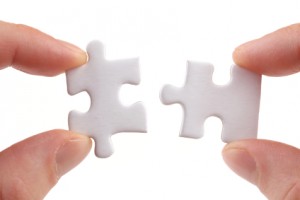 The term Borderline Personality Disorder, or BPD, might seem remote and uncommon to many. This may be an effect of the fact that those dealing with Borderline Personality Disorder often go undiagnosed and instead are simply labeled as “difficult” or “unable to get along with others.”
The term Borderline Personality Disorder, or BPD, might seem remote and uncommon to many. This may be an effect of the fact that those dealing with Borderline Personality Disorder often go undiagnosed and instead are simply labeled as “difficult” or “unable to get along with others.”
The fact is, studies show that as many as 6 million Americans are affected by Borderline Personality Disorder. Because of the frustrating symptoms those with Borderline Personality Disorder experience, substance abuse problems are often not far behind.
Symptoms of Borderline Personality Disorder include:
- Impulsive and reckless behavior
- Problems regulating emotions and thoughts
- Unstable relationships with other people
Because Borderline Personality Disorder makes it so difficult to relate to the outside world, those living with BPD are also at a high risk for the co-occurring disorder of substance abuse. Of the 6 million people diagnosed with BPD, nearly 70 percent abuse drugs and alcohol in an attempt to self-medicate.
It is assumed that alcohol, for example, will act as a “social lubricant,” relieving anxiety experienced in social situations. However, pharmacological studies from the National Institute on Alcohol Abuse and Alcoholism (NIAAA) do not support that assumption.
Common Co-Occurring Disorders
According to a study funded by National Institute of Mental Health (NIMH), about 85 percent of people with Borderline Personality Disorder are also diagnosed with other mental disorders. The following disorders contribute to the high risk of BPD co-occurring with substance abuse:
- Depression – being unable to control seemingly unrelenting negative thoughts and emotions often leads to depression
- Eating disorders – many who live with BPD develop an eating disorder in the quest for being able to control something
- Self-harm – in an effort to deflect the emotional pain of Borderline Personality Disorder, self-harm offers a physical outlet for the pain
- Social Phobia – those who are unable to control their behavior and thoughts, both characteristics of Borderline Personality Disorder, often experience anxiety in social situations, as well as paralyzing dread in anticipation of social situations
Treatment for BPD and Substance Abuse
If you are dealing with the symptoms above, you can – and should—find help at a Borderline Personality Disorder treatment center that offers dual diagnosis treatment for both BPD and substance abuse. Dual diagnosis treatment will simultaneously diagnose and address both your psychiatric disorder(s) and your substance abuse problem.
Finding support from such a Borderline Personality Disorder treatment center is effective in that you will have professionals helping you identify and manage your symptoms, which is the first step on the right track to wellness.
No one treatment is effective for every person. When looking for the best Borderline Personality Disorder treatment center for you, be sure to choose one that will work with you on an individual basis to manage both the psychiatric and behavioral side to your symptoms. Furthermore, look for a BPD treatment center with many levels of care, from residential treatment to outpatient programs. Such a treatment center can best help as you evolve, and lead you on the right track to long-term recovery.




2 Comments
Pingback: How to Begin a Successful Relationship with a BPD Therapist | Borderline Personality Treatment
Pingback: What if I Recover from my Addiction and my Friends Don’t? | Borderline Personality Treatment